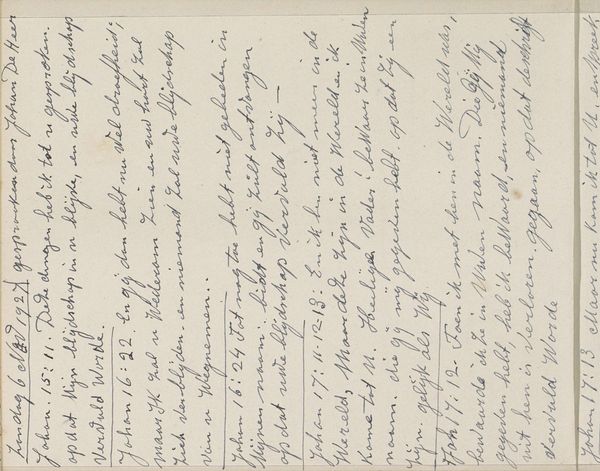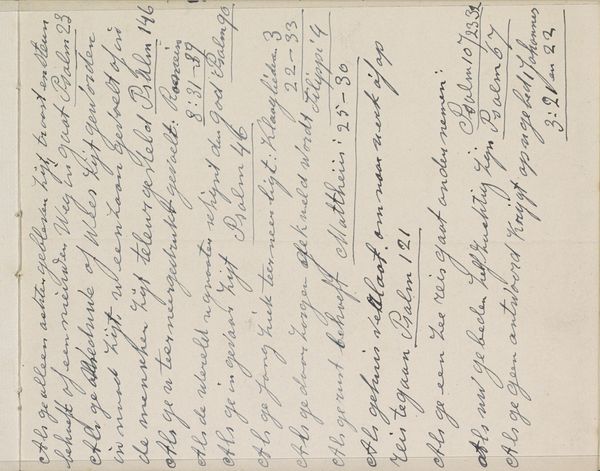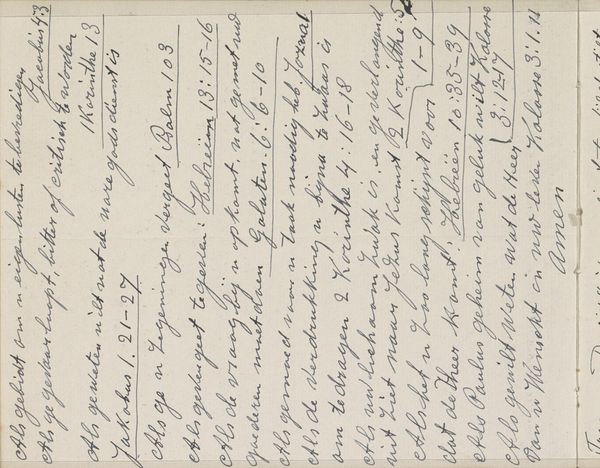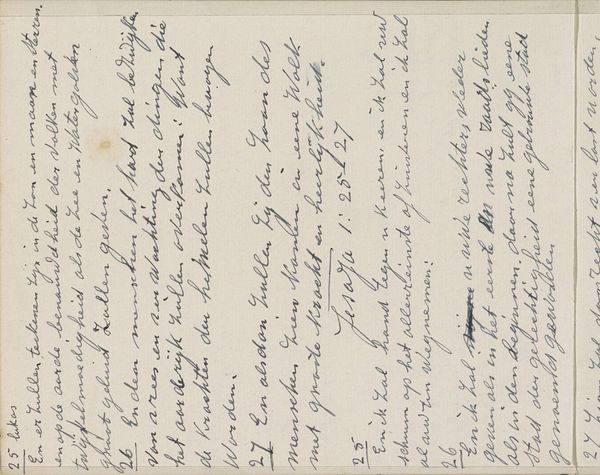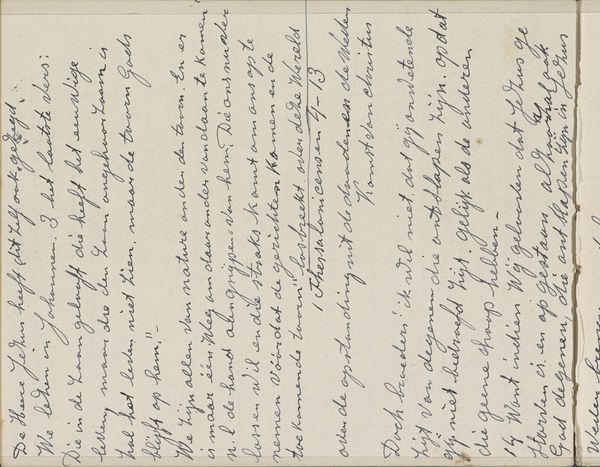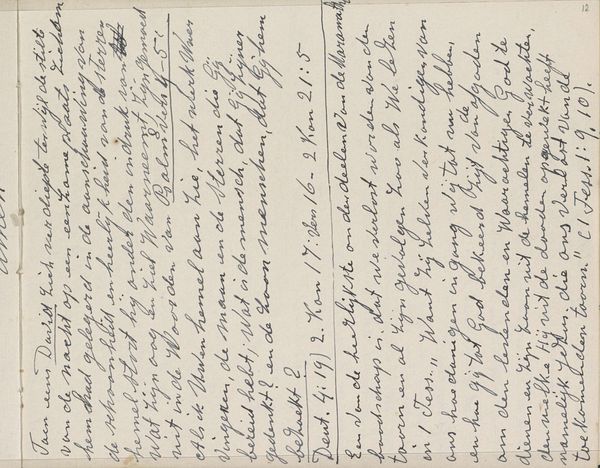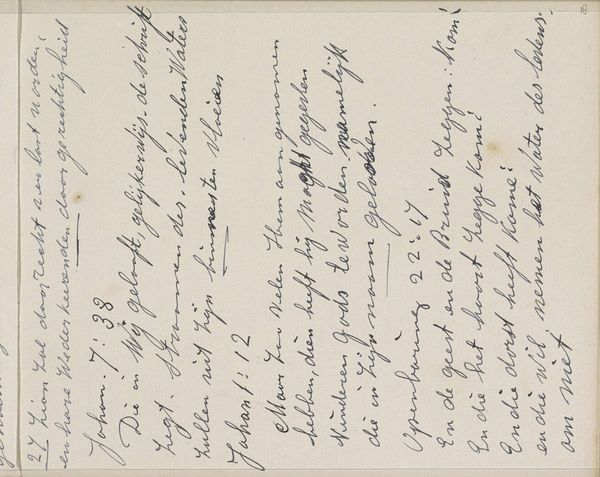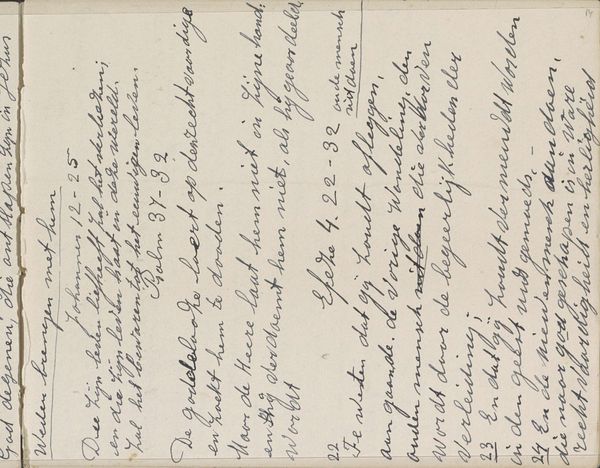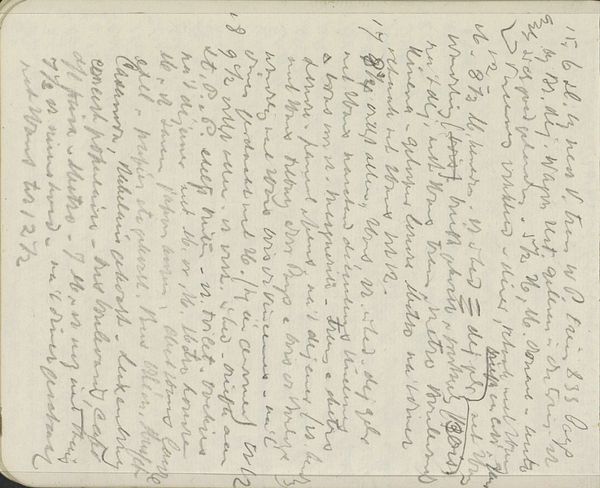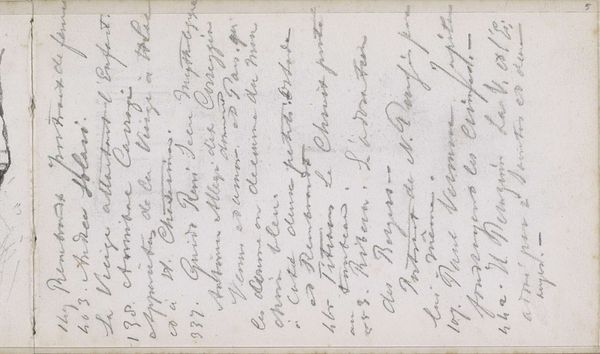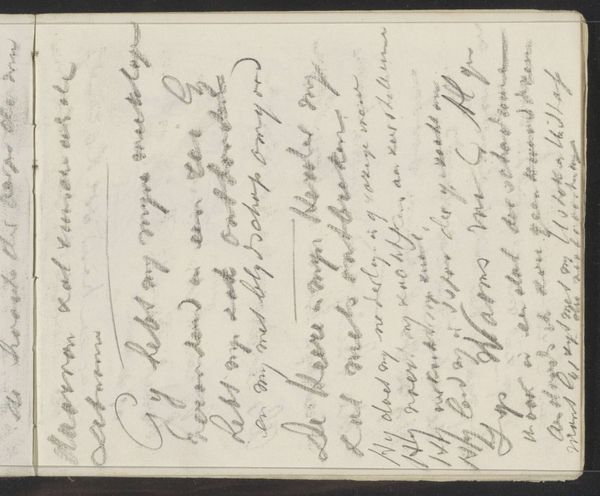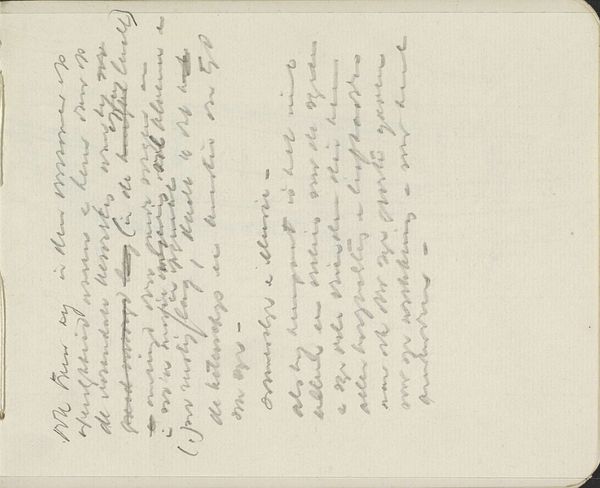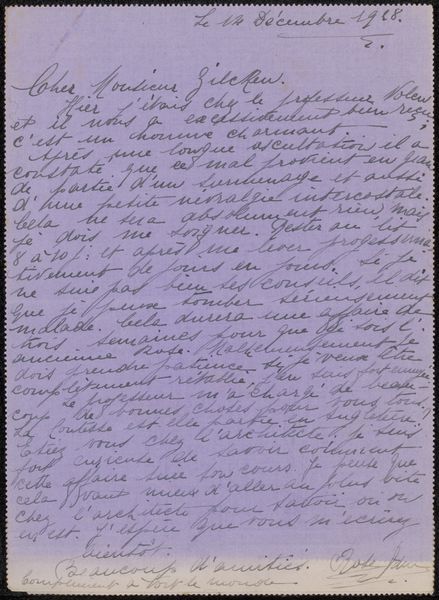
drawing, paper, ink, pen
#
drawing
#
hand written
#
paper
#
ink
#
hand-written
#
calligraphic
#
pen work
#
pen
#
calligraphy
Copyright: Rijks Museum: Open Domain
Curator: The piece we're looking at, titled "Bijbelverzen," or "Bible Verses," is a drawing crafted with pen and ink on paper. It dates roughly between 1906 and 1948, the work of Marie Jordan. Editor: At first glance, there's a contemplative, almost mournful feeling evoked by this sheet of handwritten notes. The close script suggests introspection. It's also quite powerful, how a simple piece of paper and ink can convey such gravity. Curator: I agree. Considering the historical context, and this work’s creation spanning across both World Wars, it is difficult to disregard the political and cultural turmoil of the time. Jordan likely sought refuge in these verses. This was also a time when individual and communal faith were directly challenged by state ideologies. Editor: Absolutely. The act of carefully writing out Bible verses becomes a devotional practice. The calligraphic style adds another layer. I'm especially drawn to the looping ascenders and descenders of the letters; they remind me of illuminated manuscripts. Notice the way individual verses are referenced–Psalms, Corinthians, Matthew–these fragments create a collage of meaning, and the handwritten quality emphasizes the personal connection. Curator: Right. The act of selection, what verses are included and excluded, gives an insight into Jordan's own experiences and the socio-political context she occupied. I think the drawing becomes a testament to how individuals used faith, or expressed doubt during turbulent times. These were times when established socio-cultural systems and spiritual beliefs were uprooted or questioned. Editor: It speaks to how symbols, specifically written words from religious texts, persist and adapt, acting as anchors. What an eloquent example of faith manifested physically and visually. The handwritten aspect adds an immediacy to them as opposed to print. It personalizes these biblical passages for both the writer, and now, for us, decades later. Curator: Yes. Overall, what impresses me most is that such a fragile-looking piece has persisted across such tumultuous times, holding the intimate experience of the artist, while continuing to testify a message of resistance and perseverance. Editor: I agree, the image stays with you long after you walk away. I like to think that future generations may engage with "Bijbelverzen" in a deeply meaningful way.
Comments
No comments
Be the first to comment and join the conversation on the ultimate creative platform.

